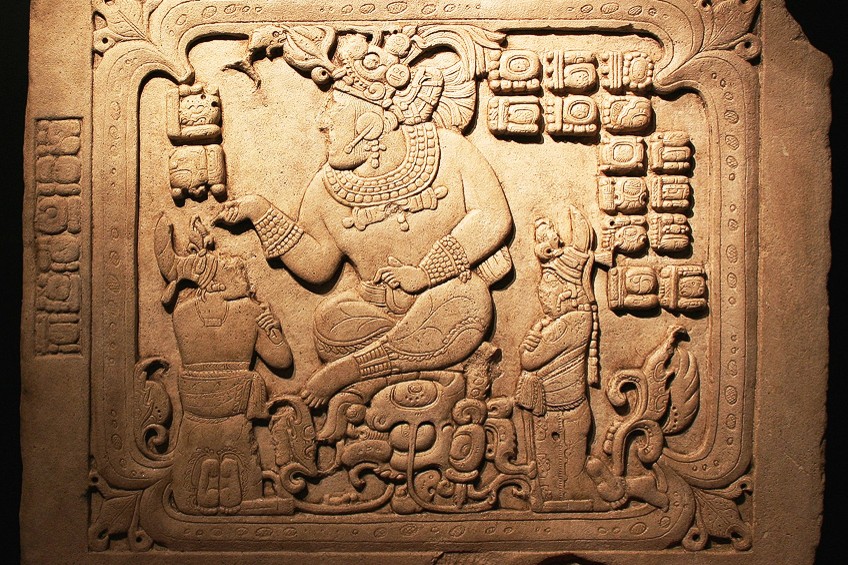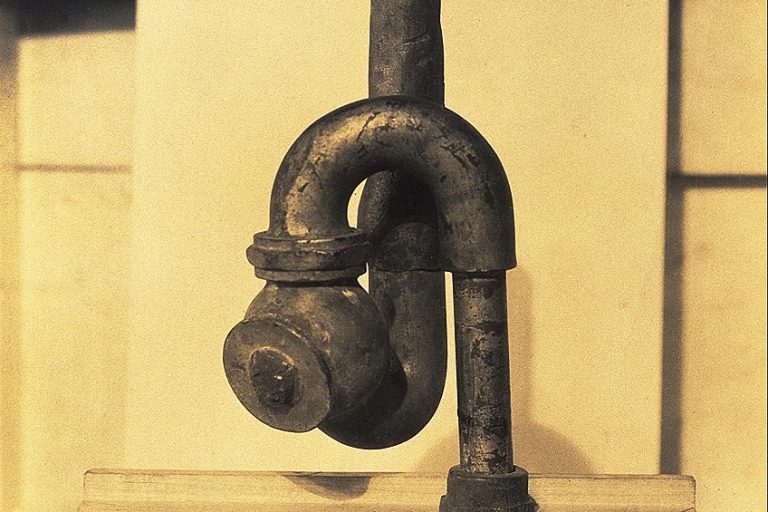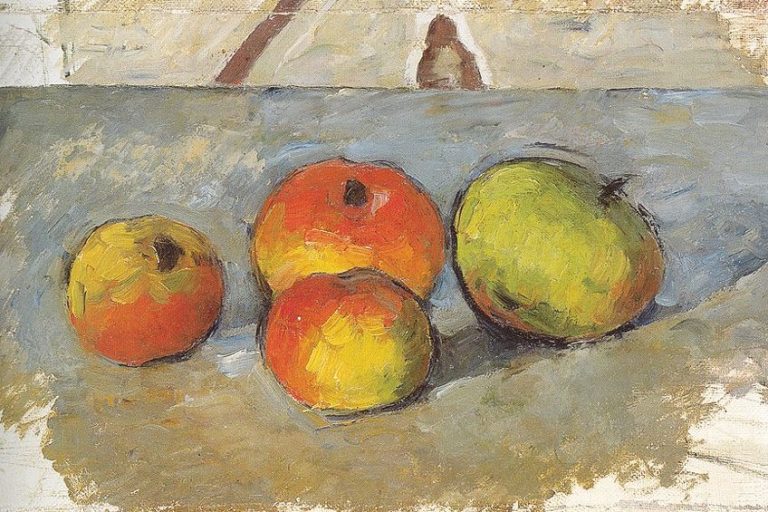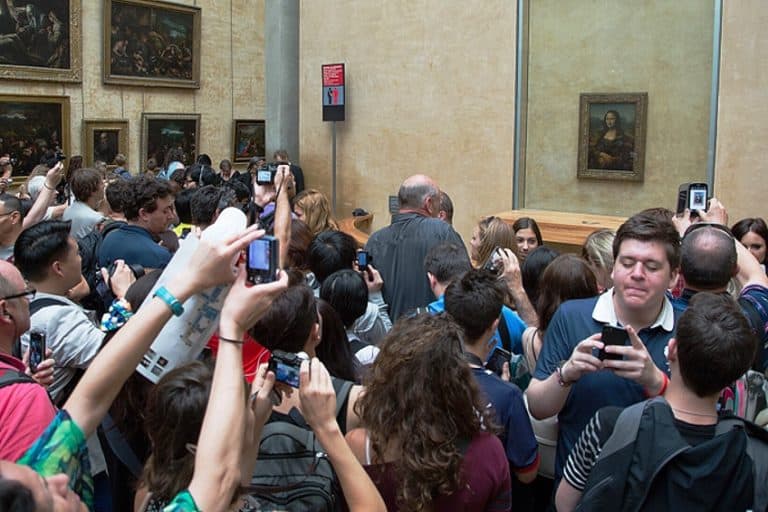Mayan Art – Discover the History of Ancient Mayan Artwork
For many, the ancient Mayan civilization is exotic, fascinating, and even a bit scary. In 2012, with the end of the Mayan calendar, it was all anyone could talk about. However, even though their prediction was not correct, there is still a lot to learn about these incredible people. Mayan art in particular is something worth taking a closer look at.
Table of Contents
Who Were the Maya?
Throughout history, civilizations have developed unique religious beliefs, political systems, and social structures. These factors, along with a few others, have resulted in the creation of art that is particular to them.
Thus, in order to understand ancient Mayan art, it is important to first have a basic understanding of their society and culture.
Origins
In around 1500 BCE, small agrarian communities began forming in Central America. These communities would make up what is now known as the Mayan civilization. In modern society, we refer to the Maya people, although this is not a name they gave themselves. It is also worth noting that they did not see themselves as a united group, but rather as many small ones.
As a result, there are 28 different Mayan languages that we know of today and were likely many more.
The Maya, as well as other pre-Colombian civilizations such as the Aztecs, are thought to be the successors of the Olmec people. They occupied a large part of Mesoamerica, spanning from southern Mexico down to Nicaragua. There were more than 40 separate Mayan towns. Although they spoke different dialects, they all shared similar religious beliefs and practices, which were developed in the Preclassic period (c. 2000 BCE – 250 CE).

The Mayan civilization was at its peak between 250 and 900 CE, an era known as the Mayan Classical period. During this time, there were around two million Maya. They had all the signs of a flourishing society such as religion, art, mathematics, and science.
However, they began to decline around 900 CE. It is believed that this was due to internal conflict and adverse weather patterns.
By the time the Spanish arrived in the New World, they had little left of their former glory. They had abandoned many of their opulent cities and reverted to small farming communities. By the 16th century, the Maya were almost all conquered by the Spanish. A few of their descendants survive, although many have adopted Catholicism as their main religion.
Agriculture
Many historians are amazed at the sophistication of Mayan agriculture. To feed large populations with only a limited amount of land, they had to become industrious. Therefore, they used a variety of inventive farming techniques, which evolved from centuries of experimentation.
The main crops grown by the Maya were maize, cassava, squash, and beans.
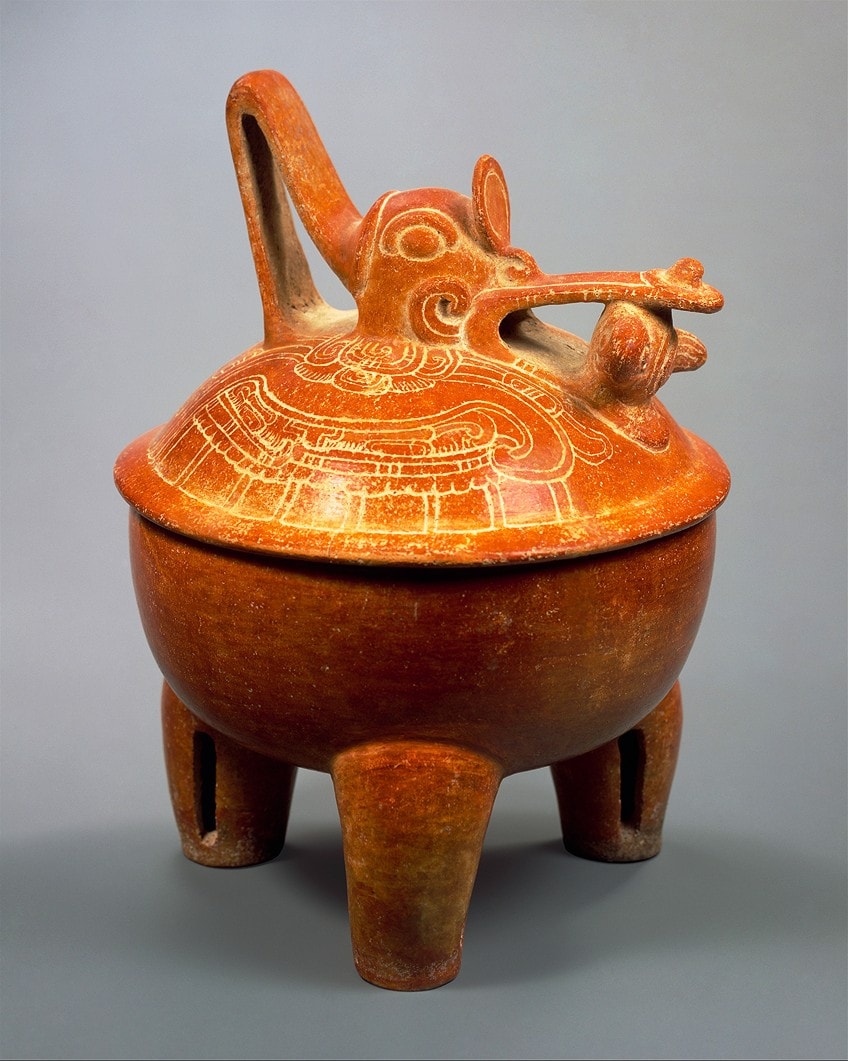
They discovered that these crops grew in harmony together, which allowed them to grow all of them in the same beds. Thus, producing a large yield of food for the village. The Maya also foraged various fruits and tubers from the forests around them.
It was previously believed that the Maya used slash-and-burn techniques exclusively to clear the land and make it more fertile.
However, this land can only be worked for a short period before it must be given time to replenish. This made historians question how they supported such large communities. Upon further exploration, it was discovered that they used advanced aquaponic techniques and irrigation systems, as well as multi-tier farming.
Religion
The Maya were polytheistic and had countless gods. It is hard to know how many deities they worshipped as most deities had various forms. For example, the Maya worshipped the sun, moon, stars, and various planets. They believed that during the day, when these celestial bodies could no longer be seen, the corresponding deities died and became Underworld versions of themselves. Although they worshiped multiple gods, a god named Itzamná (the god of art and science) was said to be king of the gods. His wife Ix Chel (goddess of childbirth and medicine) was also very important to the Maya.
The Mayan religion was highly complex. They believed in a heaven made up of 13 tiers, each with its own god, as well as an underworld of nine tiers.
In between these two realms was earth. To them, the earth was a flat expanse of land, which they believed to be the back of a crocodile. In the sky was said to be a two-headed snake (often associated with Itzamná), which encapsulated the stars and the planets.
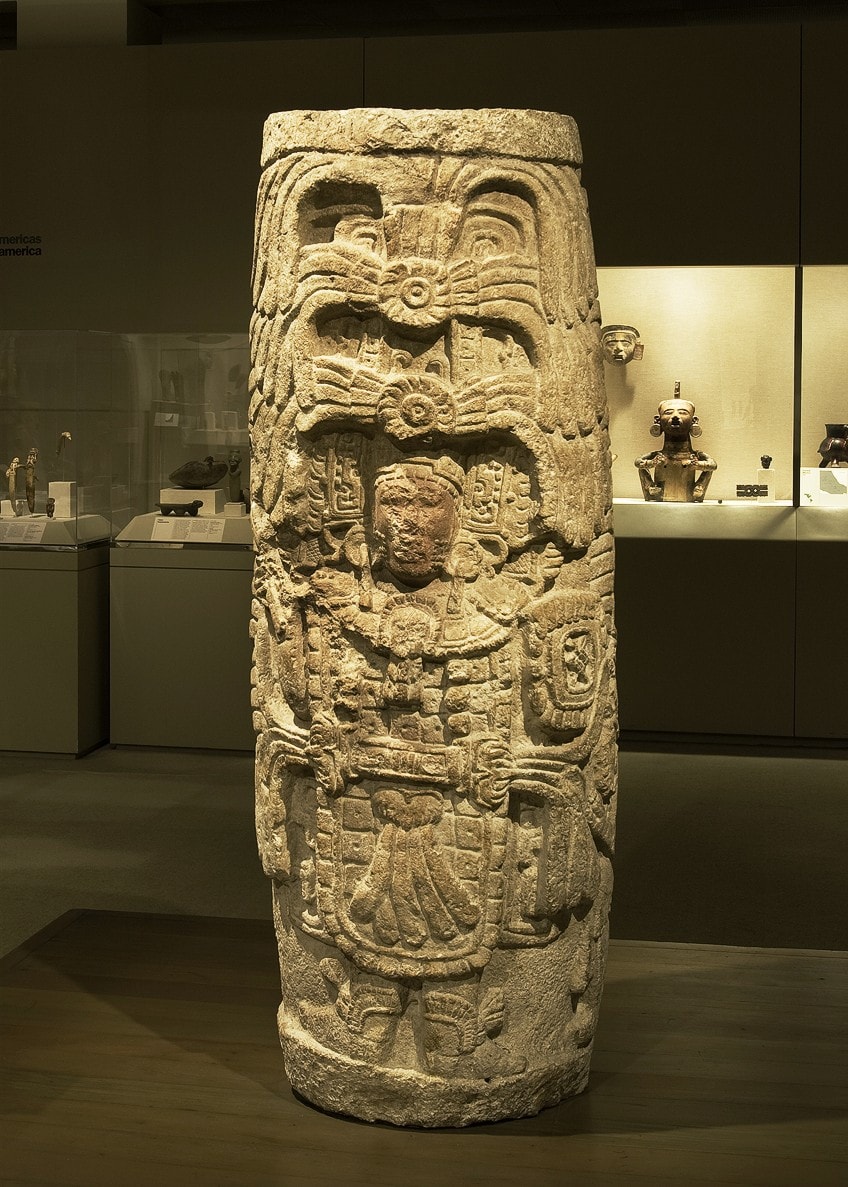
The Maya believed that the way to appease all of their gods was through the spilling of blood. Animal and human sacrifices were commonplace on religious holidays, as well as times of hardships. Human sacrifices were chosen from captives and even their own people. Leaders were also required to voluntarily give their blood regularly.
The Maya were terrified of death. This is because they believed that everyone was sent to the underworld.
Kings and priests were able to escape at nightfall (in the same way as their gods), however, normal people remained there for eternity. Those that died were buried with a supply of food and personal items to take with them to the underworld. Elite members of society were cremated or occasionally mummified. Mummies had to be “fed” by family members regularly.
Mathematics and Astronomy
The Maya had all of the signs of a thriving civilization, including mathematics, science, and astronomy. They utilized these to develop religious calendars and to achieve their monumental architecture, which will be discussed later in the article.
Mathematics and the Mayan Calendar
The Maya were one of the first civilizations to include the number zero in their number system. This was represented by a shell hieroglyph, whilst other numbers were made up of dots and dashes. They had a highly developed number system, which allowed them to do large calculations with ease. Many of us have heard about the Mayan calendar before, which supposedly predicted the end of the world in 2012.
Although they did not get that quite right, their calendar is still an impressive feat for that period in time. In fact, their solar calendar was more accurate than the Julian calendar used by the Romans.
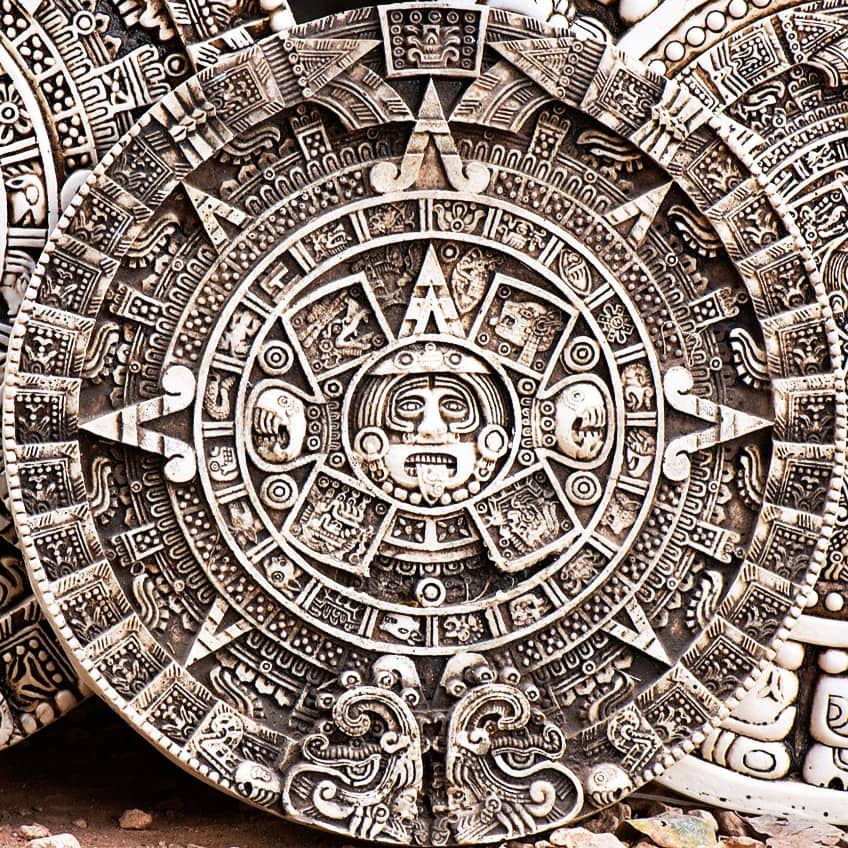
The Maya used a system of three coexisting calendar systems. They had what is known as haab, which was made up of 18 months consisting of 20 days each. This was determined via planetary movements and is equivalent to our solar calendar. You might notice, however, that the haab is only 360 days not 365 like ours. This was due to five days each year known as wayeb.
The Maya believed that during wayeb the veil between our world and the spirit world was lifted, making it a very dangerous time.
Along with haab, they observed a 260-day religious cycle known as tzolk’in. It is believed that this cycle was based on the average length of the human gestation period. Finally, a combination of haabs and tzolk’ins made up what is known as a calendar round, which is equivalent to 52 years. As their life expectancy was below 30 years, this was almost two generations long.
Astronomy
Astronomy was very important to the ancient Maya. They believed that certain events coincided with particular cosmic happenings. Therefore, by tracking celestial bodies they could tell the future. The main comic objects they were concerned with were the sun, the moon, and Venus. However, they were aware of the existence of other planets.
For the Maya, Venus was very important as it was where the god of war “Kukulcan” resided.
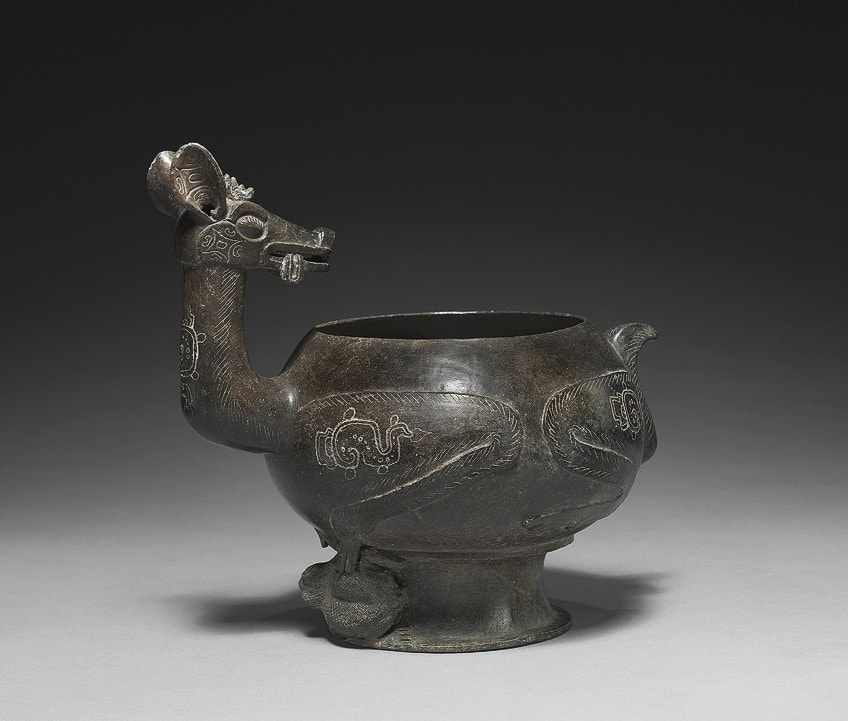
They believed that when Venus was visible as the morning star chaos would ensue. They used this celestial event to determine when to go to war with other tribes. This was also a time in which many human sacrifices were committed.
Other than Venus, solar and lunar eclipses were huge events to the Maya.
They believed that an eclipse was when the two-headed serpent that lived in the sky would take a bite out of either the sun or the moon. During this time, certain rituals would be carried out to appease the serpent.
Government and Politics
The Mayan civilization was made up of numerous tribes and chiefdoms that did not consider themselves to be one empire. Larger tribes would often take over smaller communities and thus rule over them. However, constant conflict meant that Mayan politics was ever-changing. Within each tribe, there seemed to be a fairly uniform hierarchy though.
The Maya had a king who ruled by divine power. They believed that the king and his bloodline were demi-gods with supernatural powers.
Mayan artwork, which will be discussed separately, clearly shows the omnipotence of their king. Much like in Western societies, a king was selected from the male bloodline of the previous king. The coronation of a new king was marked by mass celebrations and complex ceremonies.

Kings had many religious and war-related responsibilities. Their blood was considered necessary to contact the gods. Even prospective heirs were expected to begin giving their blood for rituals from the age of about five. A king was also expected to be a fierce warrior and military leader. His court was made up predominantly of warriors, priests, and the very wealthy. Disagreements between members of the court would be settled through ritual dance or producing a human sacrifice.
About 90 percent of the Mayan society fell into the category of commoners. This included artisans, merchants, lower members of the priesthood, farmers, and slaves.
Within the commoners, there were also several class divisions however not too much is known about these. It is known, though, that all commoners were expected to pay taxes to the nobility in the form of meat and crops.
Fall of the Mayan Civilization
From around 900 CE the Mayan civilization began to decline rapidly. Populations dwindled and they went back to living in fairly simple farming communities. Historians attribute several factors to this collapse. The most notable factor that could have led to the diminishing of the Mayan empire was changing weather patterns.
For the almost seven hundred years known as the Classical period, the Maya experienced high rainfall, which led to flourishing crops.
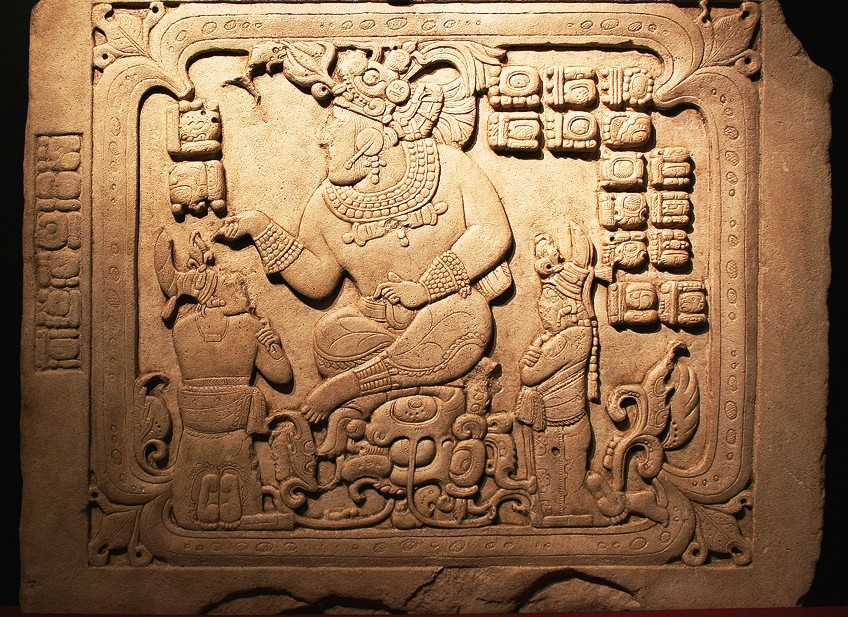
From around 900 CE, they began to experience drought, likely exacerbated by deforestation. This meant that they could not support such large populations. Centuries of internal conflict had also started to take their toll on the Mayan population. It is believed that conflict led to a change in trade networks and even rerouted water sources. This meant a decrease in resources, which negatively affected many tribes. Thus, by the time the Spanish arrived in the 1500s, they were already severely weakened.
War and new diseases brought from Europe allowed the Spanish to wipe out most of the Maya in a very short time. Those that survived were forced to assimilate with the Spanish.
Mayan Art
Now that you have an overview of Mayan culture, it’s time to discuss the main feature of the article, Mayan art. In this section, we will look at several aspects relating to Maya art. Why did they create art and what did it stand for? What types of art did they create? Finally, what are the most famous of these ancient Mayan artworks that we’ve discovered?
Why Did the Maya Create Art?
As humans, we have an innate desire to beautify ourselves and our surroundings. The Maya were no exception. They adorned their homes, temples, palaces, ceremonial courtyards, and even themselves with intricate works of art.
It is through these various forms of Mayan art that we have been able to uncover so much of their history.
Art is one of the signs of a flourishing civilization. It means that the people within that society were not only surviving but were also thriving. If one has the time to create art then it must stand that they had enough resources that their time could be spent collecting and producing things purely for enjoyment. This is why the majority of the Maya art we find comes from the Classical period, a time of prosperity for the Maya.
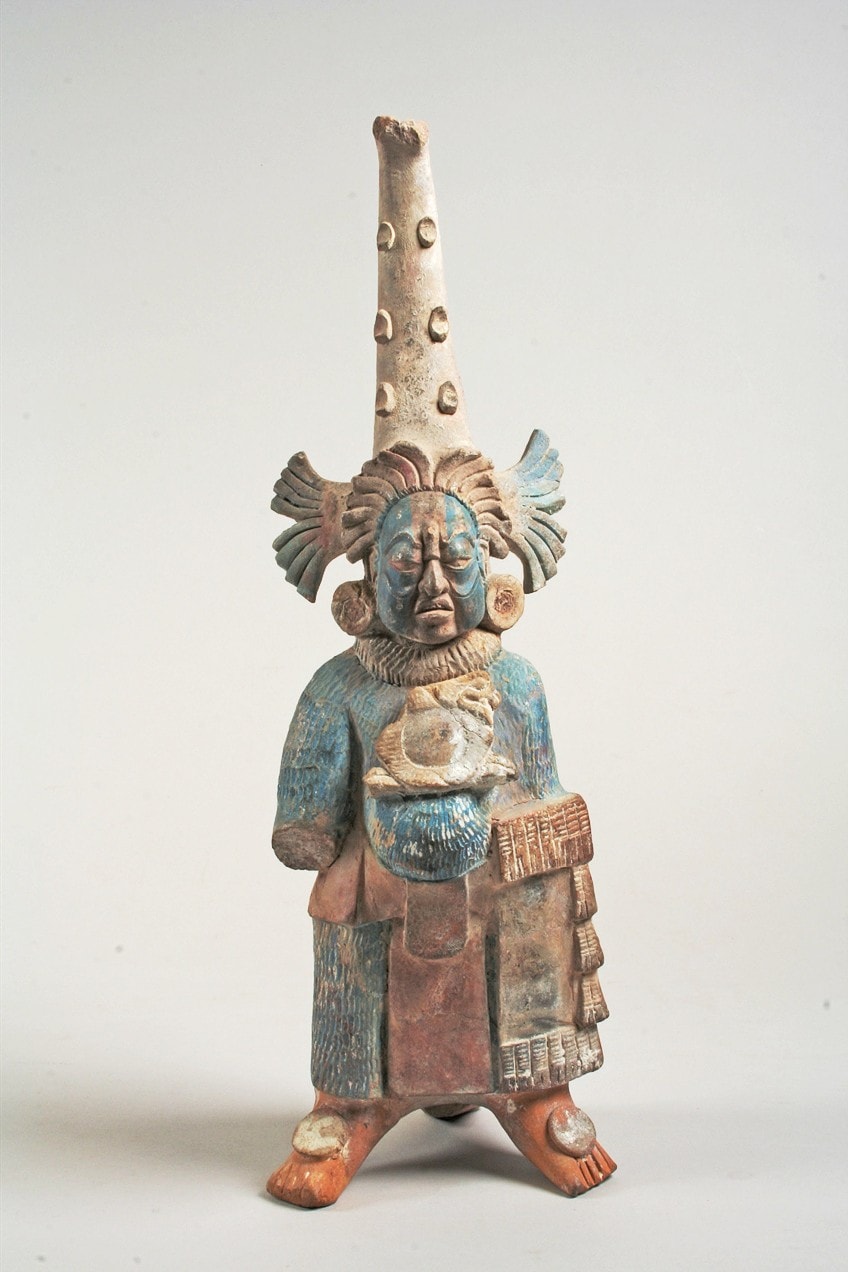
The Maya produced art for several reasons other than to simply beautify their environment. Ancient Mayan art was rooted primarily in their religious beliefs. Murals depicting their multiple gods and mythology were used to decorate the insides and outsides of temples.
Ceremonial spaces were adorned with symbolism related to various rituals. Statues of various deities accessorized towns and villages. Even the common Maya filled their homes with religious artworks.
Another reason the Maya created art was to record their history. The Maya had a writing system comprised of over 1,000 hieroglyphs. However, these hieroglyphs were typically an addition to the art. As is common throughout history only a small elite group of Maya were able to read these hieroglyphs, therefore Mayan art was the primary storyteller.
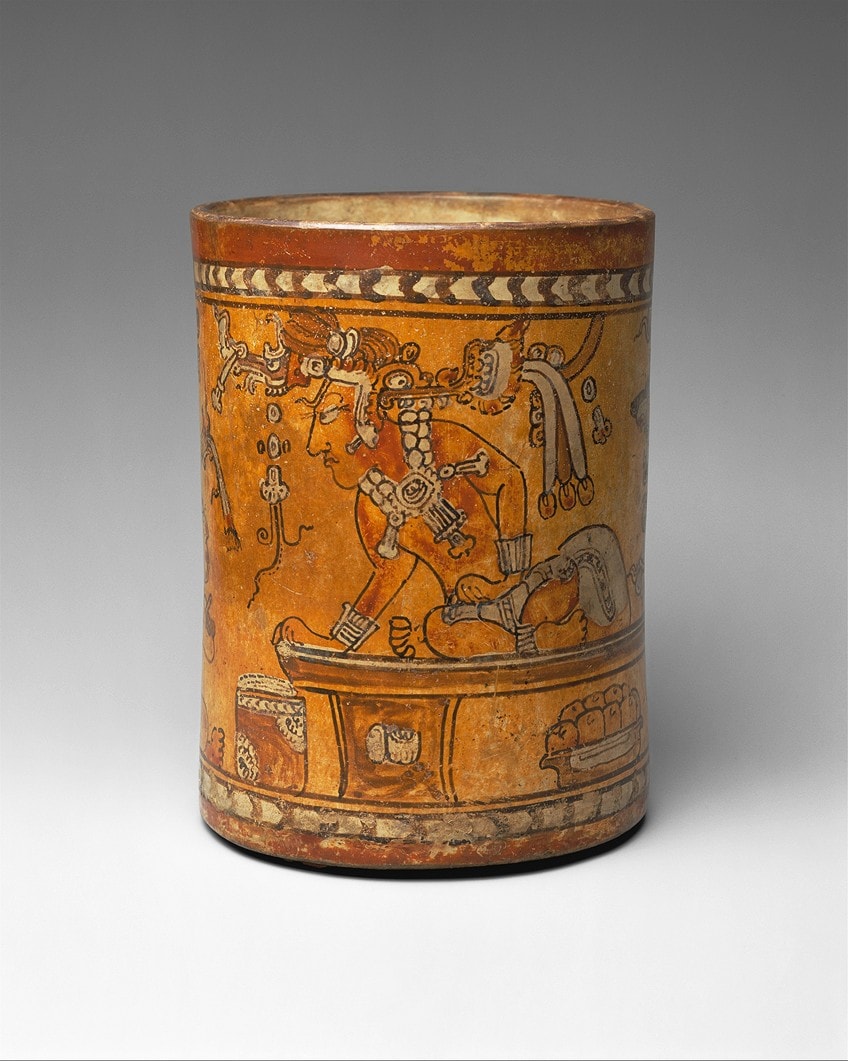
Art would depict various happening in the history of the Maya, which they believed necessary to record. Cosmic events such as eclipses and their explanation of them were recorded through art. Detailed diagrams of rituals were commonplace combining mythology and reality.
Many Mayan kings also commissioned artists to paint portraits of them so that they would not be forgotten.
Deciphering the Meaning of Mayan Art
Now that you know the purpose of Mayan art, you might be wondering what it all means. The Maya used a great deal of symbolism and religious iconography in their artworks. In this section, we will look at some common motifs in Mayan artwork to better understand it.
The Snake
Snakes were an important symbol in Mayan, which manifested regularly in their art. The Maya believed that snakes could travel between earth and the underworld, thus connecting earth and the spirit realm. They were also associated with cycles of creation and destruction due to their ability to shed their skin.
The Mayan god Kukulcan was commonly depicted as a snake with feathers. This gave him the ability to travel between earth, the underworld, and the heavens.
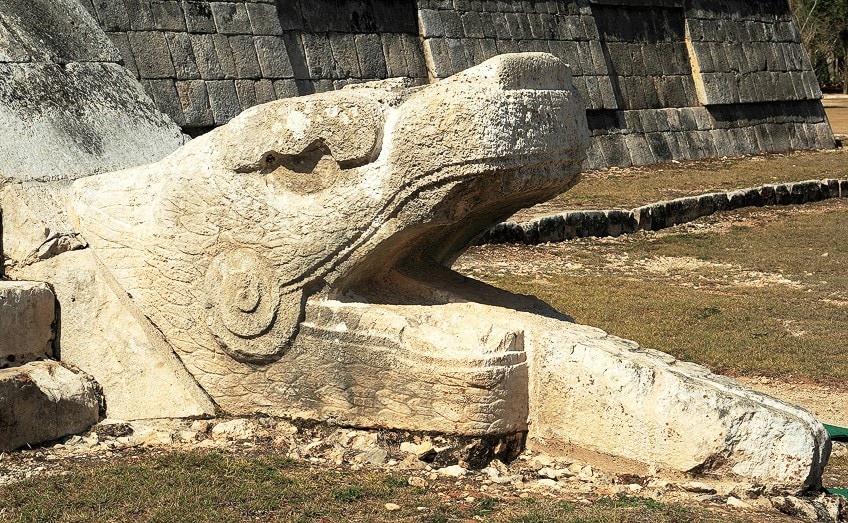
Kukulcan was known as one of the gods of creation and was very important to the Maya as well as other pre-Colombian cultures like the Olmecs and the Aztecs. In Chichen Itza, huge temples are dedicated to him and adorned with images of feathered snakes.
The god Itzamná, another creator god, is also often associated with snakes.
It was believed by the Maya that he could take the form of a two-headed snake that inhabited the heavens. It is worth noting that the Mayan words for snake and sky are pronounced the same, thus snakes are often associated with the heavens.
The Jaguar
The jaguar is also a prominent symbol used in Mayan art. The jaguar was a symbol of strength and bravery to the Maya. For this reason, multiple gods and goddesses are depicted with jaguar features. The most important of which are Ah Puch (God of the underworld), Buluc Chabtan (God of war), and Ix Chel (Goddess of the moon and fertility).
Mayan warriors often wore jaguar skins when going to war. Therefore, you will often see men wearing the head of a jaguar in Maya art.

They believed that this way they could absorb some of the jaguar’s stealth and agility. It was also to honor Buluc Chabtan in the hopes that he would grant them victory and safety during battle. Another thing fairly common in Mayan art is people in a state of transformation between humans and jaguars.
It was believed that shamans and even some kings had the ability to shapeshift into jaguars. This is often shown by making one side of the face human and the other that of a jaguar.
The Mayan Twins
One of the oldest surviving Mayan myths tells the story of twin boys named Hunahpu and Xbalanque. Their father was the mythological figure Hun Hunahpu, who was tricked into going to Xibalba by one of the lords of the underworld where he was then beheaded. The story goes that their mother, the daughter of one of the lords of the underworld, was impregnated by speaking to the head of Hun Hunahpuh.
Fleeing the wrath of her father, who did not believe her story, she escaped to earth with the help of the owls. On earth, she gave birth to twins.

The twins, who are often referred to as the Mayan twins, feature in many Mayan legends and are thus depicted frequently in their art. Hunahpu is always depicted with black spots as he has links to sickness and death. Xbalanque is often shown with jaguar characteristics due to his connection with war.
It is believed that the twins eventually became the sun and the moon, which resulted in the beginning of a new era. The Mayan royal family was said to descend from the twins.
The Eagle
The Maya also believed that eagles were divine beings as they could enter the heavens. They were primarily associated with the sun god Kinich Ahau who was responsible for producing heat and light for the earth. Due to being birds of prey, eagles symbolized focus and strategy.
They were often linked to communication and cooperation, which also made them symbols of the community.
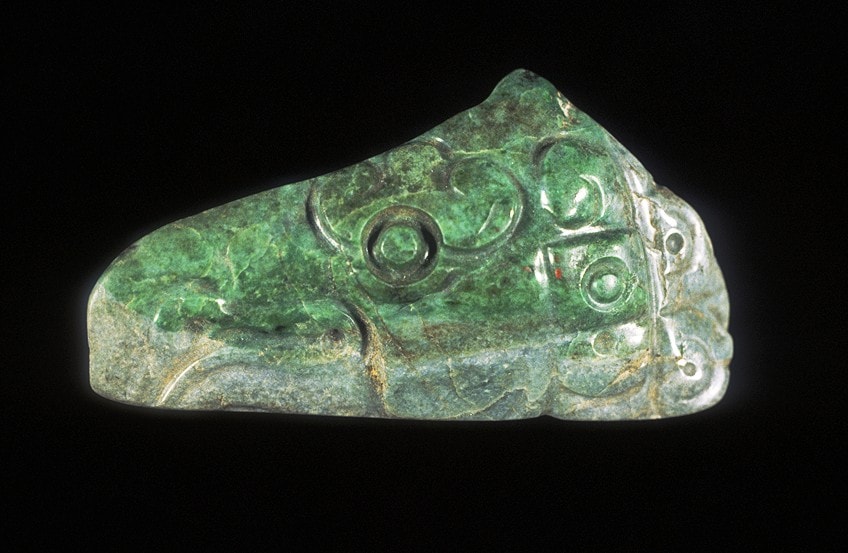
Types of Mayan Art
The Maya produced art in many forms such as painted murals, carvings, and statues. These were used to decorate several spaces including temples, palaces, city centers, and homes. Each of these categories of Mayan art will be examined in detail below.
Mayan Murals
Unfortunately, the warm, humid Central American climate is not conducive to preserving ancient artworks. Many Mayan murals have faded or disintegrated completely. However, those that have survived have provided us with valuable information about the Mayan civilization.
The most common colors used by the Maya were red (made using clay, berries, and insects) and black (made using obsidian). These resources were in abundance for the Maya.
However, there is evidence that they used other colors too. Yellow paint could be made by mixing leaves from the indigo plant with several other substances. This mixture would then be added to clay, which not only thickened the substance but caused a chemical reaction that altered the color.
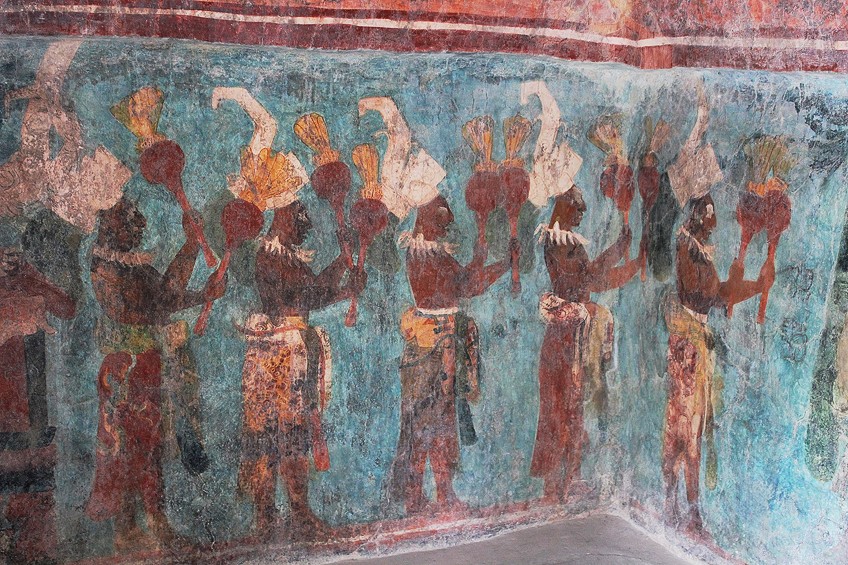
A brilliant turquoise now termed “Mayan blue” could be derived similarly to yellow. These sophisticated processes showed that the Maya had a fairly good understanding of science. Modern scientists have even emulated this technique to make dyes in recent years.
This vibrant blue paint was unique to the Maya and they considered it to be the color of the gods.
Mayan murals depict several scenes from important battles to religious festivals. The majority of the surviving murals are centered around the life of the nobility. Kings would frequently commission artworks of themselves so that they would not be forgotten. In recent years, murals showing everyday Maya have been discovered. These give us important information about the people that made up the majority of the population.

The murals show farmers of various crops. Thanks to each image being labeled, scholars were able to work out the meaning of many more glyphs. One of these was the glyph for maize, which was a vital part of Mayan society. Mayan murals were not exclusively for decorative purposes.
Often, priests would paint calendars and astrological findings onto the walls of temples. New calendars were painted over old ones when they ran out of space.
In 2008, archeologists discovered what they believed to be the oldest calendar painted on the walls of a building in Xultún, Guatemala. However, in 2022, a fragment of the calendar was found in San Bartolo dating back to 200 BCE. San Bartolo was a small Mayan town meaning that major cities would have used calendars even earlier.
Mayan Carvings
The Maya were expert engravers. They carved intricate patterns, figures, and hieroglyphs into a variety of materials such as limestone, wood, and even precious stones like jade and obsidian. Mayan carvings can be found in many forms. In this section, we will take a closer look at, stelae, zoomorphs, and wooden carvings.
Stelae
A stela is a large stone slab, which is dug into the ground so that it can stand vertically. They would typically be made of limestone as it was soft and easy to carve, yet still very durable. Often stelae stood in the town center and could be as large as seven meters tall so that even those at the back of a crowd could see them. Historians believe they were created to accompany religious alters.
Mayan artists would carve images into the stone using a technique called relief carving. Relief carving is when the background of the images is chiseled away so that the images stick out.

Stelae often contain images of gods and kings surrounded by complex Mayan patterns. These images were believed to be related to the alter they partnered with. Although most were found plain, Historians believe that they would have once been painted in bold red, blue and yellow shades.
The art style used shows that stelae were most common during the Mayan Classical period.
Stelae have been found in all of the major Mayan cities and historians believe that even smaller towns would have each had one to decorate their town square. Almost 200 Mayan stelae were found in the city of Calakmul in Mexico, showing that they were a prevalent art form used by the Mayans.
Zoomorphs
Zoomorphs were a common form of ancient Mayan art, in which boulders of sandstone were carved into the shape of animals. These animals would have been ones with religious significance to the Maya such as jaguars, snakes, and crocodiles.
The zoomorphs would be covered in a combination of Mayan patterns and hieroglyphs, which told stories either about the town or exerts from Mayan mythology.
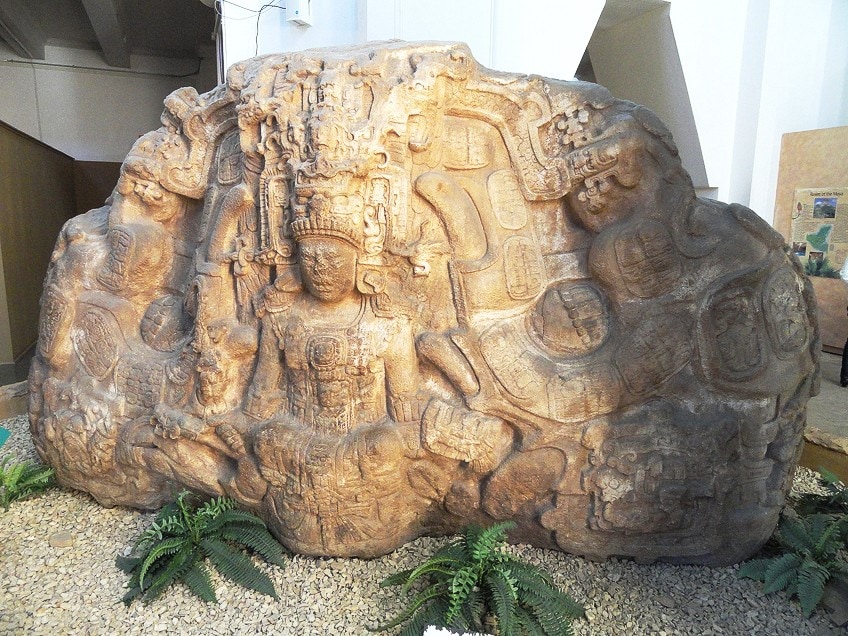
The largest quantity of zoomorphs has been found in Guiriqua in Guatemala. They have been dated back to a period between 746 and 805 CE. Zoomorphs have lasted the test of time and many were found in good condition. Historians believe that the Maya in Guiriqua began creating zoomorphs prolifically after they gained independence from the larger town of Copán. This is because many are dedicated to K’ak Tilw Chan Yopaat the leader who gained their independence.
One such zoomorph was a mixture between a crocodile and a jaguar, two very important animals in the Mayan religion.
One of the largest zoomorphs ever found was in Guiriqua and is known as Zoomorph P. It depicts one of its kings, Sky Xul, emerging from the mouth of a turtle. The turtle is an important symbol in the Mayan belief as it relates to some of their various maize gods as well as their creation. This zoomorph was likely created to portray a link between the royal bloodline and the creation of the world.
Wood Carvings
Few wooden Mayan carvings survive in the modern day. This is due to the wood rotting as well as the fact that all wooden idols would have been destroyed by Spanish conquistadors who forced the Maya to convert to Christianity. However, historians believe that wooden carvings would have been commonplace in Mayan society.
Elaborately carved wooden lintels were found in a pyramid in Tikal, Guatemala.
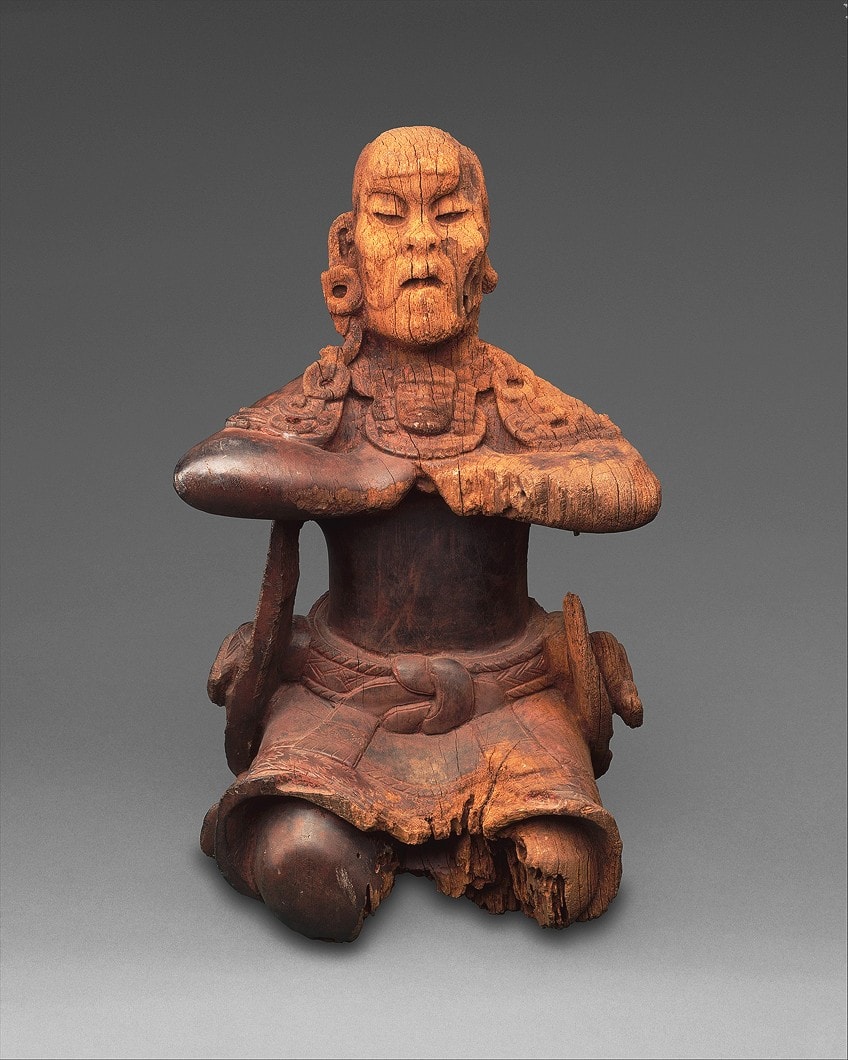
They contain images of various Mayan kings as well as other important symbols such as jaguars, feathered serpents, and characteristics linked to the Mayan god of death. In other Mayan temples, impressions left behind by the wood were found yet the wood had rotten away. This showed that wood was frequently used to create carvings and decorations. One of the only surviving free-standing wooden sculptures can be found in the Metropolitan Museum of Art in New York City.
The wooden sculpture is of a seated man whose arms are extended in front of him. It is believed that this would have functioned as a stand of sorts, most likely for a mirror.
Mayan Statues
The Maya were talented sculptors, especially given their limited and primitive sculpting tools. It is believed that they first began sculpting in the 1st millennium BCE. Mayan statues were created for several decorative, religious, and even practical reasons. They were made from various materials, which were abundant in the region occupied by the Maya. In this article, only statues made of the following materials will be examined; stone, ceramic, and jade.
Stone Statues
Numerous Mayan statues made from stone have been discovered by archeologists. The stones most commonly used were limestone and sandstone as they were relatively soft and easy to sculpt. Stone sculptures were often commissioned by the nobility to decorate their palaces, temples, and city centers.
Stone sculptures frequently depicted either kings of the past and present or important deities.
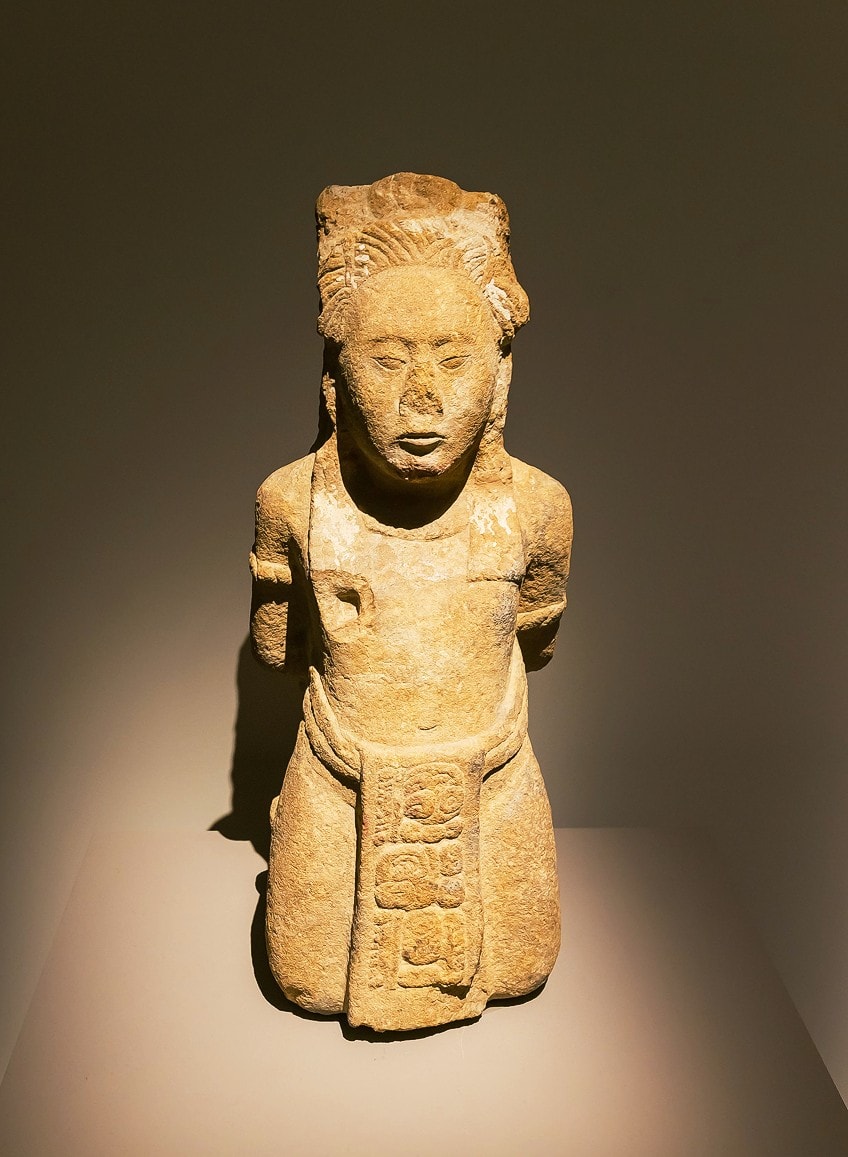
Around 2011, a Mayan statue in almost perfect condition was found at an archeological site in Tonina, Mexico. It is believed to show a hostage (as its hands are bound) taken captive after a battle with Palenque. The statue is covered in glyphs, which give the dates and details of the battle.
It is one of the most well-preserved stone statues from the Mayan civilization that we have discovered so far.
Ceramic Statues
Copious ceramic statues have been found in several different Mayan cities. They had pragmatic as well as purely ornamental purposes. Often Mayan artists created small clay sculptures to adorn the tops of pot lids.
Intricate ceramic urns were also sculpted to hold the ashes of members of the nobility who had been cremated.

Decorative idols and figurines made from clay were fashioned by artists to enrich ceremonial altars. These would typically be of deities or animals which held symbolic meaning. Wealthy Maya would give ceramic statuettes to one another as gifts to decorate their homes and later their graves.
Jaina Island is well-known for the ancient Mayan ceramics found there.
Jade Statues
Jade was known by the Maya as the stone of eternity, due to its links with the supernatural. It was a very meaningful stone in the Mayan religion, particularly with more green variations. They associated these with their maize god as it resembled the leaves of the corn.
Thus, they believed jade would bring prosperity and even cure certain illnesses.
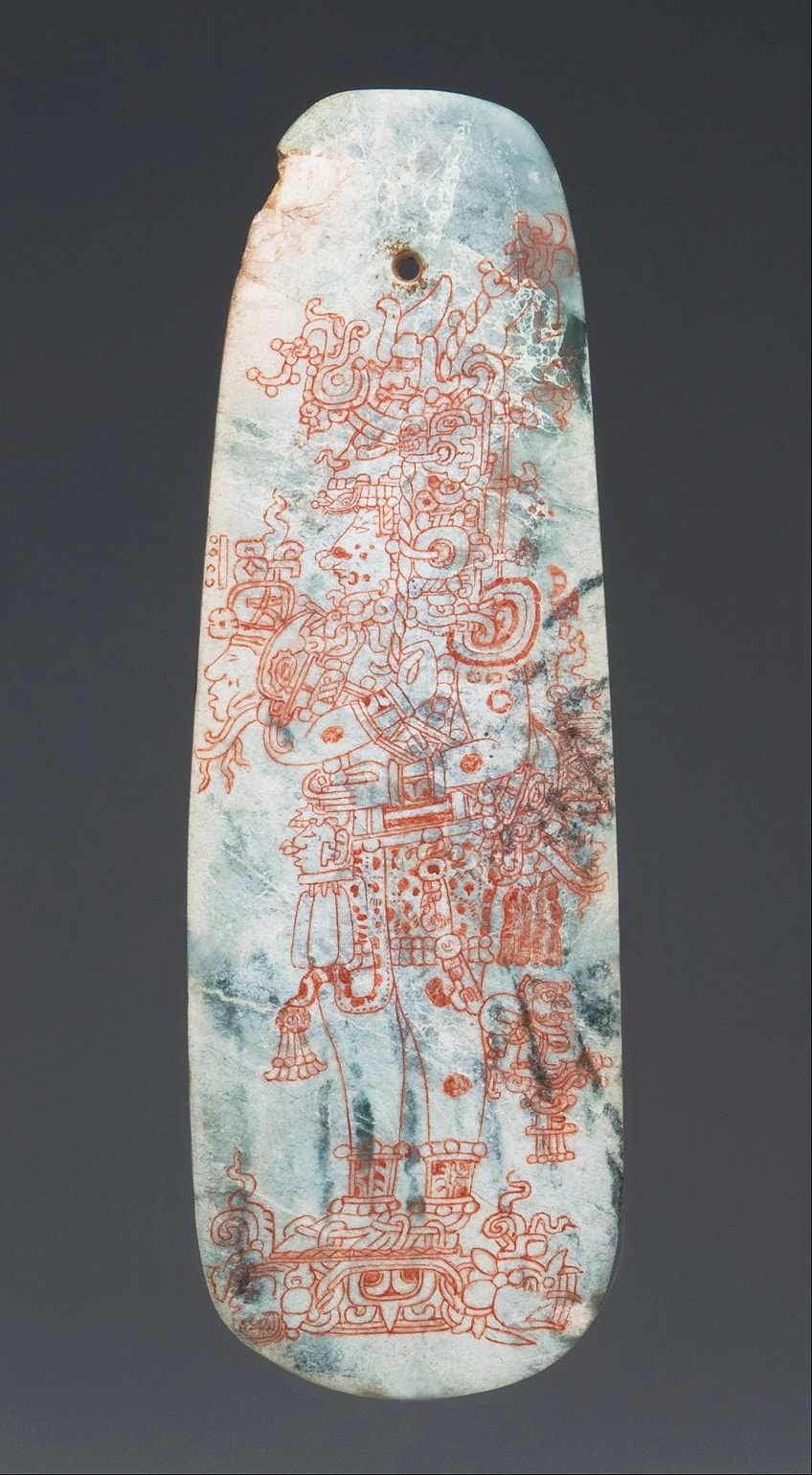
The Maya used the word chalchihuti to refer to jade as well as other green stones found in their area. The chalchihuti found in this region was much stronger than the jade used in the Far East, thus Mayan jade artifacts are often intact when found.
Archeologists have found statues carved purely of jade as well as those made of limestone containing jade accents.
Famous Mayan Artworks
In recent years, archeologists have taken huge efforts to find out more about the Mayan civilization. One of the ways they have done this is through Mayan artwork found in the ruins of ancient cities. Some of the more informative and exciting pieces will be looked at below.
The Stelae of Quiriguá, Guatemala
| Time Period of Artwork | 426 – 810 CE |
| Discovered | Discovered in 1881 in Quiriguá, Guatemala |
| Dimensions | Largest stands at eight meters |
| Where It Is Located | Archeological Park and Ruins of Quiriquá |
Although stelae were a common art form used by the Maya none are quite as impressive as those found in the city of Quiriguá in Guatemala. Firstly, they are the largest stelae that have been found in Central America. Stela E, which was found at this site is the largest monolith of any civilization from the Americas.
The stelae found in Quiriguá are also some of the best-preserved stelae from the Mayan civilization.
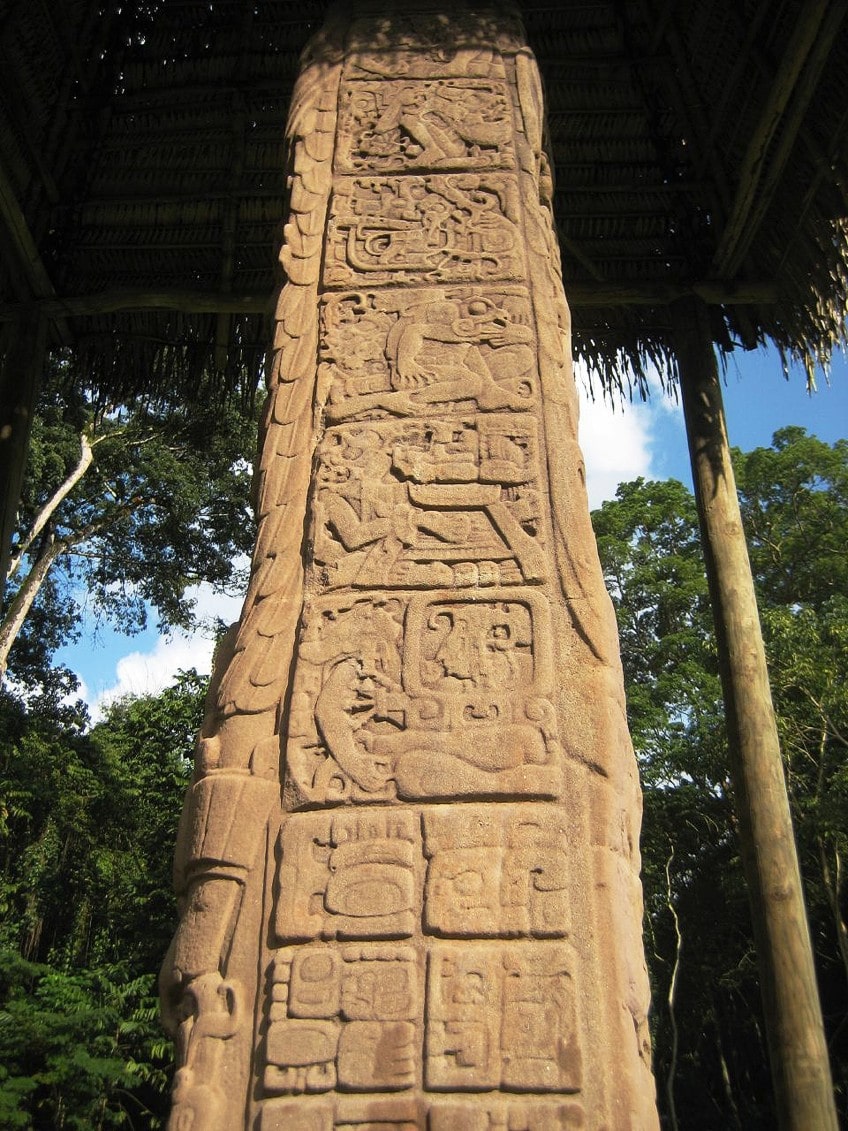
This is due to the particular sandstone they have been carved into, which is especially durable. Due to how robust the stone was, they were able to carve the stelae using a rather unusual technique called middle or half relief.
This gave the appearance that the figures were emerging from the stone.
The stelae contain carvings of past kings of Quiriguá. One of these kings was Cauac Sky, one of the most noteworthy rulers of Quiriguá. Cauac Sky ruled during the Mayan Classical Period for over 60 years. This was particularly impressive as the average lifespan of the Maya was under 30 years.
The Funerary Mask of the Red Queen
| Time Period of Artwork | 672 CE |
| Discovered | Discovered in 1952 in Chiapas, Mexico |
| Dimensions | 36.7 x 23 x 8 cm |
| Where It Is Located | Museo de Sitio de Palenque, Mexico |
One of the most elaborate burial sites of the ancient Mayan civilization is that of Queen Tz’akbu Ajaw in Chiapas, Mexico. She is known as the Red Queen by archeologists as her body was found covered in red paint. Body painting was a common art form used by the Maya for rituals as well as to declare one’s rank.
Tz’akbu Ajaw and her husband, Janaab Paka I, ruled over Palenque during the Mayan Classical period.

When she died, she was given the same burial afforded to most kings of the time, meaning she must have been highly respected as this was uncommon for women at the time. Her tomb was filled with many ornate artifacts, which amazed archeologists. One of these artifacts was a mask sculpted from limestone and adorned with jade, malachite, and obsidian. The mask was placed over the face of her corpse.
The use of jade and malachite is particularly important as these as links to the supernatural in the Mayan belief system.
The Heads of the Lords of Xibalba
| Time Period of Artwork | 900 – 1000 CE |
| Discovered | Discovered in 2007 in Nakum, Guatemala |
| Dimensions | Unavailable |
| Where It Is Located | Penn Museum, United States |
In 2007, archeologists began exploring an ancient Mayan archeological site in Nakum, Guatemala. The site had not previously been a priority due to the presence of drug cartels in the area, which made it unsafe for archeological teams to enter.
The site had also been heavily looted and so many were uncertain if there was even anything left to find.
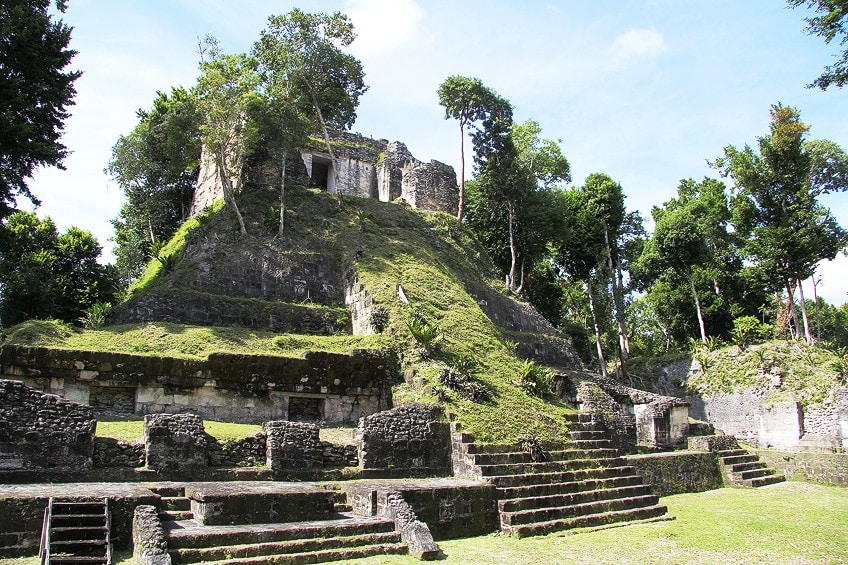
However, with support from the Guatemalan government, a team was eventually able to conduct an expedition. They managed to find a surprising number of ancient artifacts, even after all of the looting. One of the most fascinating things they found was a collection of nine ceramic heads.
These nine ceramic heads dated back to between 900 and 1000 CE, a period following the decline of the Mayan Classical era.
The heads were carved in a Naturalist style and were thought to represent the nine Lords of the Night. These were Mayan deities, which each ruled over one of the nine levels of Xibalba (the Mayan underworld). This finding helped to solidify the importance of these deities to the Maya.
The Mayan civilization was one that was rich and highly sophisticated for its time. It had all of the markings of a thriving society such as science, government, religion, and most importantly art. The artworks of the ancient Maya and beautiful and fascinating. If you enjoyed this article, we encourage you to continue exploring the amazing world of Mayan art.
Take a look at our Mayan artwork webstory here!
Frequently Asked Questions
What Kinds of Art Did the Maya Have?
The Maya expressed artistic skills in several areas. Most people associate Mayan art with brightly painted murals or monumental architecture. However, Mayan artists were also talented carvers who created outstanding stelae, zoomorphs, and wooden carvings. They also sculpted statues out of several materials such as stone, ceramic, and even precious stones such as jade.
What Is Distinctive About Mayan Art?
Firstly, the Maya used an array of brightly colored pigments that were unique to them in their art. Secondly, they were incredibly skilled at sculpting realistic statues of kings and various symbolic animals. This was particularly impressive due to their limited and rudimentary tools. Finally, their artwork was unique to them as it mainly expressed their religious beliefs. Other pre-Colombian groups such as the Olmecs and the Aztecs had differing beliefs, which they portrayed in their own artwork.

Emma completed her Bachelor’s Degree in International Studies at the University of Stellenbosch. She majored in French, Political Science, and History. She graduated cum laude with a Postgraduate Diploma in Intercultural Communication. However, with all of these diverse interests, she became confused about what occupation to pursue. While exploring career options Emma interned at a nonprofit organization as a social media manager and content creator. This confirmed what she had always known deep down, that writing was her true passion.
Growing up, Emma was exposed to the world of art at an early age thanks to her artist father. As she grew older her interests in art and history collided and she spent hours pouring over artists’ biographies and books about art movements. Primitivism, Art Nouveau, and Surrealism are some of her favorite art movements. By joining the Art in Context team, she has set foot on a career path that has allowed her to explore all of her interests in a creative and dynamic way.
Learn more about the Art in Context Team.
Cite this Article
Emma, Littleton, “Mayan Art – Discover the History of Ancient Mayan Artwork.” Art in Context. August 17, 2022. URL: https://artincontext.org/mayan-art/
Littleton, E. (2022, 17 August). Mayan Art – Discover the History of Ancient Mayan Artwork. Art in Context. https://artincontext.org/mayan-art/
Littleton, Emma. “Mayan Art – Discover the History of Ancient Mayan Artwork.” Art in Context, August 17, 2022. https://artincontext.org/mayan-art/.


